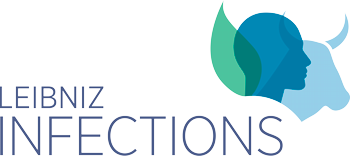FINISHED PROJECTS
During the first funding period, the Interdisciplinary Research Groups (IRG) worked on 4 exemplary research projects:
Prevention of tuberculosis transmission in times of high migration
The aim of this project was to identify the causes and background of human-to-human transmission of tuberculosis in times of high migration and to develop possible intervention measures and prevention strategies. The reason for this was the increasing number of new cases in Germany since 2014, which is mainly due to the influx of people from countries with a high prevalence of tuberculosis. In 2016, 5,915 new cases were reported to the Robert Koch Institute.
Almost three quarters of these new TB patients were born abroad. The project was divided into two partial studies. In both studies, methods of empirical social research were applied and prevention strategies were developed by means of problem-centred interviews or a standardised survey. The first part of the project aimed at identifying problems and possibilities for improvement in the prevention of human-to-human transmission of TB in the areas of diagnosis and therapy. To this end, interviews were conducted with doctors, public health service staff and patients who had come to Germany as refugees and were treated for TB here.
In the second phase of the project, the effectiveness of TB training measures was to be investigated in asylum-seeking TB patients by interviewing patients from two pulmonary specialist clinics about their knowledge of the disease and their attitudes towards the therapy or future use of medication.
Project participants:
Trainee: Dr. Sven Stadtmüller (GESIS)
Supervision: S. Ehlers (FZB), J. Schröder (GESIS), N. Menold (GESIS)
Partner: FZB, GESIS, GIGA, HKI
Characterisation of aerosols that can transmit pathogens via the air
Respiratory pathogens, such as tuberculosis bacteria or influenza A viruses can be transmitted to humans in different ways: Through direct contact with an infected person, by touching contaminated surfaces or by inhaling the pathogens through the air. Until now, very little is known about how pathogens are transported through the air and how the aerosols that transport these pathogens are structured. Aerosols are suspensions consisting of solid or liquid particles that can float in the air over a long period of time. They therefore represent an optimal means of transport for the pathogen to be transmitted via the air.
The air research project aimed to shed more light on this transmission path and to model the transport path of aerosols in the air. To this end, the biophysical properties of the pathogens, which have a major influence on how they are transported through the air, were first investigated. Besides size, surface properties and morphology, hygroscopicity also played an important role. This refers to the ability to absorb and bind water from the air. Following these investigations, aerosols from the ambient air and from the respiratory tract of infected hosts were detected and characterised. These findings can help to identify infection risks and establish protective measures.
Project participants:
Trainee: Elisabeth Pfrommer
Supervision: K. Schepanski (TROPOS), G. Gabriel (HPI), T. Gutsmann (FZB),
U.E. Schaible (FZB)
Partner: ATB, FLI, FZB, GESIS, GIGA, HPI, PIK
Waters as a reservoir for pathogens
Water is a vital element for all living things. At the same time, it is also a habitat for a multitude of microorganisms, including pathogens that can be transmitted to humans or animals via water. Ponds, rivers and lakes can therefore represent a central reservoir for pathogens. The pathogens enter the water body via sewage, animals and humans, from where they can infect other individuals and thus spread. Especially water bodies of small size can serve as a hotspot, as they are usually rich in nutrients and are a meeting point for a large number of water birds. Furthermore, small water bodies are a preferred habitat for the offspring of bloodsucking insect species.
The aim of the research project was to investigate the occurrence of pathogens such as Clostridium difficile and (avian) influenza A viruses. Various water sources in the Berlin area were selected for these investigations, including five lakes, the Berlin Zoo and a sewage treatment plant. To be able to observe seasonal changes, the sites were sampled every three months. In addition to water, sediment samples were taken from the lakes and environmental parameters such as temperature, pH value and nutrient concentrations were documented. In addition, molecular genetic methods were used to record the microbiome, i.e. the entire bacterial community of a site.
Project Participants:
Trainee: Daniela Numberger
Supervision: A. Greenwood (IZW), H.-P. Grossart (IGB)
Partner: DSMZ, HPI, IGB, IZW, ZALF, ZMT
Vectors as potential carriers of pathogens
Vectors are living organisms that transmit pathogens from an infected animal or human to other humans or animals. Among the most important vectors are arthropods, as well as rodents, such as the bank vole. These can transmit diseases such as malaria, borreliosis or the hantavirus. Especially the mosquito as a potential vector has become more and more important in recent years, as could be seen from the recent Zika virus epidemic in South and Central America. Globalisation and global warming have for some time been contributing to the spread of vectors and the increasing availability of sources of infection. Native bloodsuckers can therefore encounter new pathogens and new vectors can become carriers of introduced pathogens. At present, however, there is insufficient knowledge of the ecology and vector competence of native species for appropriate risk analyses. This is where the work of the vector group should make a contribution. Breeding habitats were investigated, host preferences analysed and collected mosquitoes tested for pathogens. Zoological gardens are ideal study areas for such investigations, as the animals kept there are closely monitored and diseases are thus quickly detected. In addition, wild animals such as migratory birds live here, which can introduce pathogens. Competent vectors would thus make it possible to transmit pathogens from the wild reservoir to zoo animals.
Project Participants:
Trainee: Eva Heym
Supervision: H. Kampen (FLI), D. Walther (ZALF)
Partner: BNITM, FLI, IGB, IZW, PIK, ZALF

